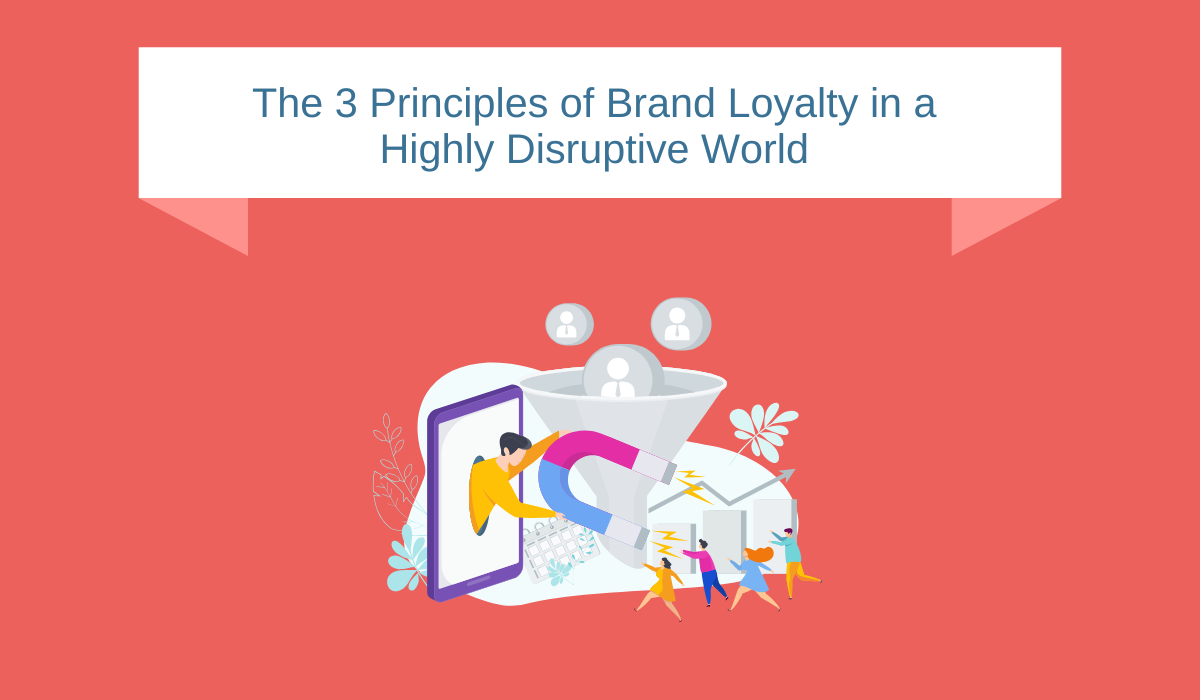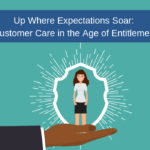The 3 Principles of Brand Loyalty in a Highly Disruptive World

Brand loyalty is a reflection of a customer’s commitment to a relationship with a given retailer or service provider. But, of course, the current era of disruption is changing everything about all our relationships. The way we interact with people and brands has changed—and consumer spending priorities have evolved just as fast.
Read on to discover the three principles of brand loyalty in a world where disruptions continue to shift our buying behaviors (and one interesting exception to the rule.)
Convenience: First Among Equals
Convenience has become the first key principle of brand loyalty. Online sales are expected to exceed $1.7 trillion by 2027, representing an all-time high of over 20% of all retail sales. At the helm of this increase is the boom of online food and beverage orders, in which growth is nearly double that of all average eCommerce sales.
These are stunning statistics. And the biggest common denominator behind these purchases is convenience. Over four years after the pandemic warded off shoppers from wandering the aisles of their go-to stores, 81% of consumers continue to crave the convenience of home deliveries. Many more are chasing the efficiency of mobile shopping and website search tools.
Big brands—ones with significant human and financial resources—remain ahead of the game. As smaller retailers newly invest in apps, industry leaders are elevating pre-existing mobile experiences and optimizing eCommerce sites. Pickup and delivery options also continue to expand. Just look at Walmart’s online net sales, which are rising 31.8% per year.
Since COVID-19—which left consumers with a limited array of options—baby boomers remain a lucrative market in eCommerce. Despite being some of the last holdouts in the transition to online buying, this generation is armed with spending power and now spend more online than Gen Z.
It’s important to note, however, that most of these trends driving convenience were already in the works, and even smaller brands were beginning to catch on before disruptions accelerated. Customer service expert Shep Hyken says that many of the convenience options such as curbside delivery, touchless service, and more would have grown prominent, even if the pandemic hadn’t happened.
Availability: Limited Options Led to New Loves
The next key principle of brand loyalty, hand-in-hand with convenience, is availability. Following the 2021-2023 supply chain crisis, today’s consumers are no strangers to empty shelves. Some brands have managed to catch up with demand and patch any holes in their supply chain, but others are challenged by the supply-demand equation to this day. New disruptions continue to keep manufacturing and shipping complex to retailers.
Whereas convenience is driven at least partly by choice, availability forces the hand of many buyers. But they aren’t always disappointed by the alternatives. When obligated to try new brands, even a store’s own private label products often present a novelty and open up new possibilities for customers who subscribed for years to the mentality of “this is the way we’ve always done it.”
And now that customers have explored new brands, it’s likely many of the behaviors they adopted amid supply chain delays will stick around for the long run. Many grocery shoppers, for example, now prefer the taste and quality of private-label brands.
Value: The New Must-Have
Inflation has tightened purse strings for many households, pushing more people to seek out products and services with more bang for their buck. Thus, a major driver of brand loyalty in recent years has been value.
Unsurprisingly, consumers expect to spend less on discretionary purchases in the coming months—and those planning purchases are searching for a good price. Luxury brands are experiencing a slowdown in sales as buyers wait for marked-down outlet prices. But even with everyday brands, customers let frugality lead their way—the increase in spending on private-label store brands wasn’t just due to availability; it was also about value, with those generic brands saving a customer as much as 20-30% off equivalent name brand products. A recent report shows that 67% of consumers in the U.S. actively cut back their spending due to the economy. If a brand couldn’t prove its value to a frugal customer, it more than likely experienced a drop in sales over the last year.
And once again, it’s likely some of these buying behaviors will stick beyond the pandemic—once consumers know their dollars can spread further—and usually without too much sacrifice to quality—few will go back to lower-value brands.
The Intersection of Brand Loyalty and Customer Care
Despite the introduction of these three new principles of brand loyalty in the increasingly disruptive (and disrupted) world, customer experience still reigns supreme. Consumers do, after all, still have choices available to them. Even when a brand is convenient, available, and high-value, if the experience in the buying process is negative, customers will go elsewhere.
The same goes for customer care efforts post-purchase, whether it’s transactional interactions like account changes or payment options or more complex scenarios that require escalations or specialized agents. Empathy, responsiveness, and a streamlined process still matter. Brand loyalty depends heavily upon customer experience, regardless of the impact of the pandemic.
We’ve written before about the changes in consumer behaviours and the impact on customer care – from fluctuations in arrival patterns to dynamic average handle times. When you take the impact to brand loyalty into consideration, it is more important than ever that your customer care program, whether in-house or outsourced, is founded on an ability to adapt. What worked in last year may not work in the years ahead.
If you’re going to RFP in the next six months, challenge your prospective partners to highlight demonstrated capability to provide leadership and insight in a changing environment. Challenge their experience in adapting their processes to meet today’s consumers where they live: online, searching for value, availability, and convenience all wrapped up in a positive support experience that cements their loyalty.



